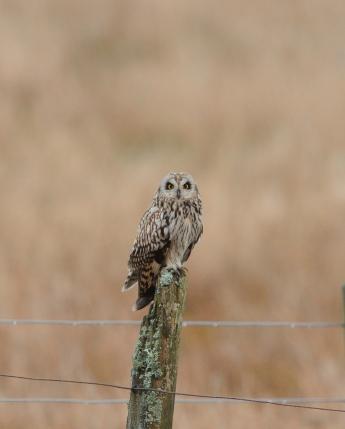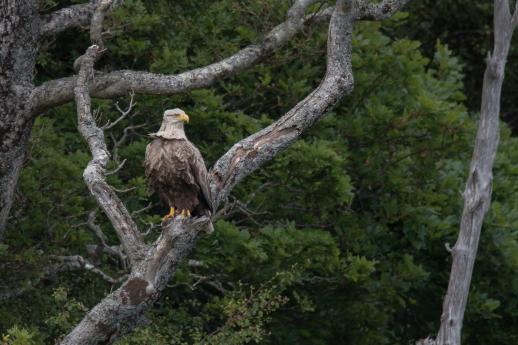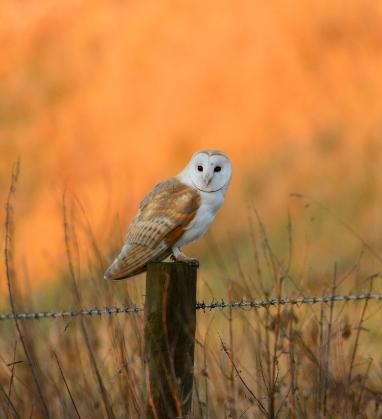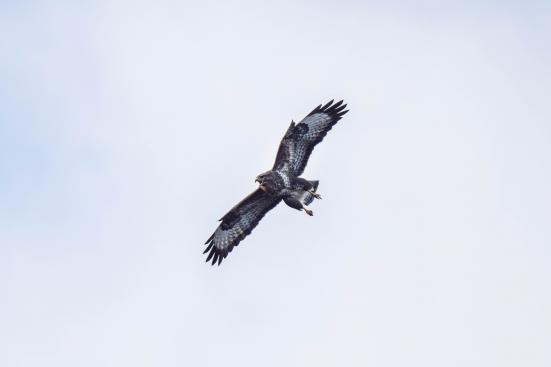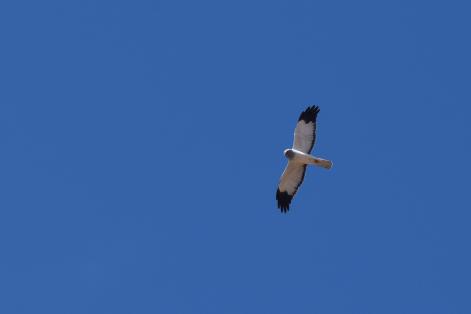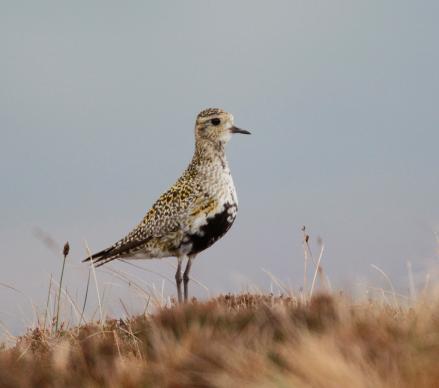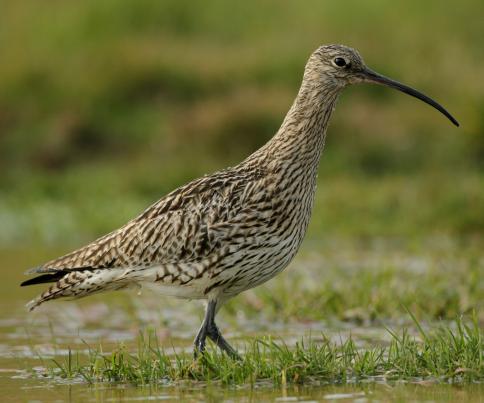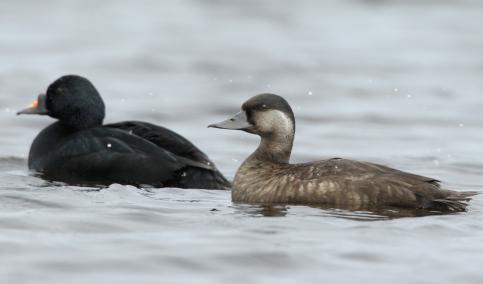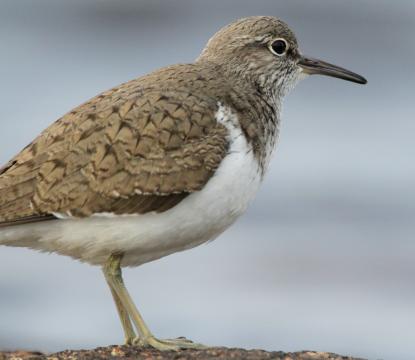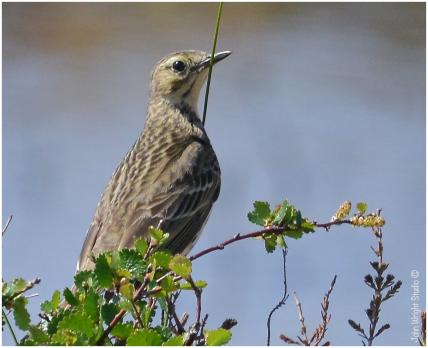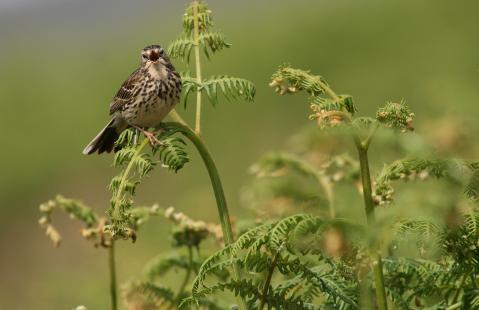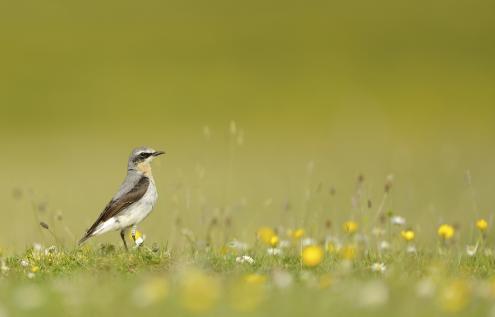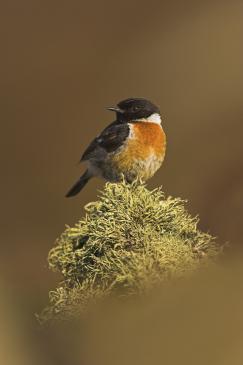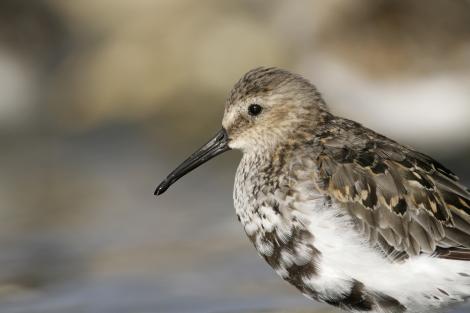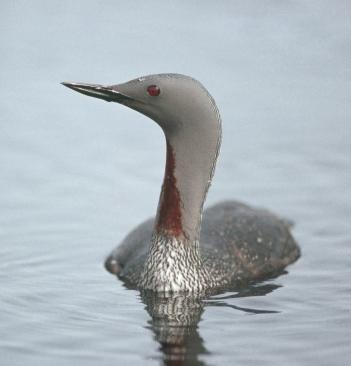Short-eared owl (Asio flammeus) Photo credit: Ben Andrew |
Most likely to see: all year round Habitat: coastal marshes and wetlands Food: preferably voles and other small mammals UK conservation status: Amber Population: 620-2,180 pairs More information: https://www.rspb.org.uk/birds-and-wildlife/wildlife-guides/bird-a-z/short-eared-owl/ https://www.bto.org/understanding-birds/species-focus/short-eared-owl |
|
Most likely to see: year round Habitat: coastal areas Food: fish, birds, rabbits and hares UK conservation status: Red Population: 106 pairs More information: https://www.rspb.org.uk/birds-and-wildlife/wildlife-guides/bird-a-z/white-tailed-eagle/ https://www.iucnredlist.org/species/22695137/93491570 https://www.nationalgeographic.co.uk/animals/2019/04/bird-week-white-tailed-eagle
|
White-tailed sea eagle (Haliaeetus albicilla)
Photo credit: Sam Udale-Smith |
Barn owl (Tyto alba)
Photo credit: Ben Andrew |
Most likely to see: year-round, with the best chance at dusk Habitat: any open country Food: small mammals and some small birds UK conservation status: Green Population: 4,000 breeding pairs More information: https://www.rspb.org.uk/birds-and-wildlife/wildlife-guides/bird-a-z/barn-owl/ |
|
Most likely to see: Year round Habitat: moorland, woodland, pasture and marsh bog Food: small mammals and carrion UK conservation status: Green Population: 57,000-79,000 pairs More information: https://www.rspb.org.uk/birds-and-wildlife/wildlife-guides/bird-a-z/buzzard/ https://www.britishbirdfood.co.uk/birdguide/bird/buzzard
|
Buzzard (Buteo Buteo)
Photo credit: Sam Udale-Smith |
Hen harrier (Circus cyaneus)
Photo credit: male: Sam Udale-Smith |
Most likely to see: year round Habitat: upland heather moorland during breeding season Food: small mammals and birds UK conservation status: Red Population: 617 pairs More information: https://ww2.rspb.org.uk/our-work/conservation/henharrierlife/ https://www.rspb.org.uk/birds-and-wildlife/wildlife-guides/bird-a-z/hen-harrier/ |
|
Most likely to see: Summer Habitat: upland moorland Food: worms and insects UK conservation status: Green Population: 38,000-59,000 breeding pairs More information: https://www.rspb.org.uk/birds-and-wildlife/wildlife-guides/bird-a-z/golden-plover/ https://www.bto.org/understanding-birds/species-focus/golden-plover https://www.iucnredlist.org/species/22693727/86551440
|
Golden plover (Pluvialis apricaria)
Photo credit: Andy Hay |
Curlew (Numenius arquata)
Photo credit: Andy Hay |
Most likely to see: Summer Habitat: coastal and upland areas Food: worms and shrimp UK conservation status: Red Population: 66,000 breeding pairs More information: https://www.rspb.org.uk/birds-and-wildlife/wildlife-guides/bird-a-z/curlew/ |
|
Most likely to see: Spring/Summer Habitat: during breeding season they favour lochs in the Flow Country Food: molluscs UK conservation status: Red Population: 52 breding pairs, 100,000 wintering individuals More information: https://www.rspb.org.uk/birds-and-wildlife/wildlife-guides/bird-a-z/common-scoter/ |
Common scoter (Melanitta nigra)
Photo credit: Andy Hay
|
Greenshank (Tringa nebularia)Photo credit: RSPB Forsinard Flows Reserve |
Most likely to see: Summer in the Flow Country Habitat: peatland pools and water-logged moorland Food: worms, fish and snails UK conservation status: Amber Population: 700-1,500 breeding pairs, 700 wintering individuals More information: https://www.rspb.org.uk/birds-and-wildlife/wildlife-guides/bird-a-z/greenshank/ https://www.iucnredlist.org/species/22693220/86684205 https://ebird.org/species/comgre
|
|
Most likely to see: Summer Habitat: rivers and lochs Food: insects, worms and some molluscs UK conservation status: Amber Population: 15,000 breeding pairs, 73 wintering individuals More information: https://www.rspb.org.uk/birds-and-wildlife/wildlife-guides/bird-a-z/common-sandpiper/ https://www.iucnredlist.org/species/22693264/86678952 https://www.nationalgeographic.com/animals/birds/c/common-sandpiper/ |
Common sandpiper (Actitis hypoleucos)Photo credit: Andy Hay
|
Mistle thrush (Turdus viscivorus)
Photo credit: John Wright |
Most likely to see: year round Habitat: most areas apart from high bare ground Food: berries, insects and worms UK conservation status: Red Population: 170,000 breeding territories More information: https://www.rspb.org.uk/birds-and-wildlife/wildlife-guides/bird-a-z/mistle-thrush/ https://www.iucnredlist.org/species/22708829/87878799 https://www.discoverwildlife.com/animal-facts/birds/facts-about-mistle-thrush/ |
|
Most likely to see: year round Habitat: upland moors, salt marshes and agricultural areas depending on time of year Food: insects UK conservation status: Amber Population: 2,000,000 breeding territories More information: https://www.rspb.org.uk/birds-and-wildlife/wildlife-guides/bird-a-z/meadow-pipit/ https://www.iucnredlist.org/species/22718556/60271986 https://www.bto.org/understanding-birds/species-focus/meadow-pipit |
Meadow pipit (Anthus pratensis)
Photo credit: Tom Marshall
|
Northern wheatear (Oenanthe oenanthe)
Photo credit: Ben Andrew |
Most likely to see: March-October Habitat: upland areas Food: insects UK conservation status: green Population: 240,000 pairs More information: https://www.rspb.org.uk/birds-and-wildlife/wildlife-guides/bird-a-z/wheatear/ https://www.audubon.org/field-guide/bird/northern-wheatear
|
|
Most likely to see: year round Habitat: headland, conifer plantations or coastal areas Food: invertebrates, fruit and seeds UK conservation status: Green Population: 59,000 pairs More information: https://www.rspb.org.uk/birds-and-wildlife/wildlife-guides/bird-a-z/stonechat/ https://www.iucnredlist.org/species/22710184/87909121 http://www.garden-birds.co.uk/birds/stonechat.html
|
Stonechat (Saxicola rubicola)
Photo credit: Ben Hall |
Skylark (Alauda arvensis)Photo credit: Sam Udale-Smith |
Most likely to see: year round Habitat: any open countryside from lowland farmland to upland moorland Food: insects and seeds UK conservation status: Red Population: 1,500,000 territories More information: https://www.rspb.org.uk/birds-and-wildlife/wildlife-guides/bird-a-z/skylark/ https://www.iucnredlist.org/species/102998555/132039889 https://www.bto.org/understanding-birds/species-focus/skylark
|
|
Most likely to see: Summer Habitat: coastal regions and some wetlands Food: Insects, worms and snails UK conservation status: Amber Population: 9,600 breeding pairs, 350,000 wintering individuals More information: https://www.rspb.org.uk/birds-and-wildlife/wildlife-guides/bird-a-z/dunlin/ |
Dunlin (Calidris alpine)
Photo credit: Andy Hay |
Red-throated diver (Gavia stellate)
Photo credit: Chris Gomersall |
Most likely to see: Summer/Autumn Habitat: lochs and moorland Food: fish UK conservation status: Green Population: UK breeding: 1,300 pairs. UK wintering: 17,000 individuals More information: https://www.rspb.org.uk/birds-and-wildlife/wildlife-guides/bird-a-z/red-throated-diver/ https://www.iucnredlist.org/species/22697829/131942584 https://www.wildlifetrusts.org/wildlife-explorer/birds/grebes-and-divers/red-throated-diver
|



